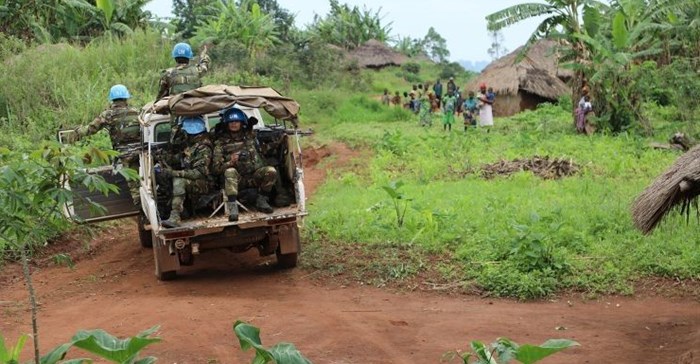Solar panels, electric vehicles and wind turbines are all essential for tackling climate change and ensuring sustainable development. However, there is a dark side to this technology. Poor management of the minerals needed for green energy - from the mine site to the end customer - could fuel fragility, conflict, and violence, a new report by the International Institute for Sustainable Development says.

The United Nations Stabilisation Mission in the Democratic Republic of the Congo conducts a patrol in the Ituri Province. UN Photo/Michael Ali.
Released today, Green Conflict Minerals applauds the global surge in demand for green technologies and tracks the full spectrum of minerals required for their production. While this should translate into economic boons for communities near required minerals, strategic reserves can become fuel for exploitation if not managed responsibly. This a risk when they are found in countries already struggling with fragility and corruption.
“Stories of armed groups operating cobalt mines in the Democratic Republic of Congo and of riots breaking out around bauxite mining in Guinea are just two examples that have raised this issue’s profile, but it’s something that needs to be championed by the same voices correctly calling for a green economic transition,” says report co-author Clare Church. “Most of these metals are not covered in existing conflict mineral legislation, with the exception of tin.”
While previous studies have examined minerals in the wider tech sector or concentrated solely on rechargeable batteries, the report is the first study to look at the broad swathe of metals needed for low-carbon technologies and point to gaps in the responsible management of supply chains.
To visualise the report’s findings, an interactive map overlays strategic mineral reserves required for green energy technology with measures of state fragility and corruption (as defined and measured by the Fund for Peace and Transparency International, respectively). The frequent overlap of state weakness with mineral concentration shows how ripe the situation is for abuse.
“There’s no question we need to shift to a low-carbon economy. This technology will get us there,” says Church, “but we need to do it without blood on our hands.”














